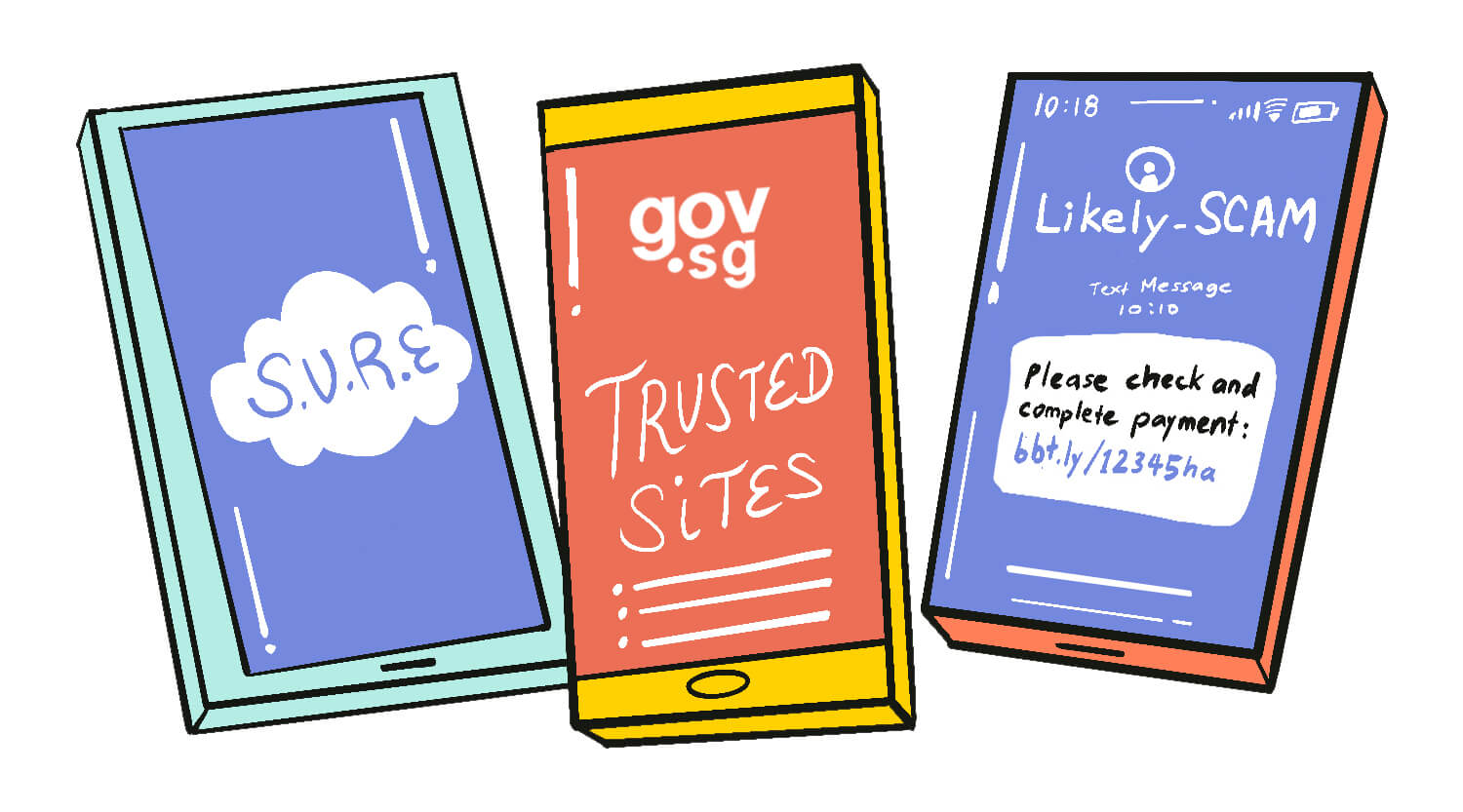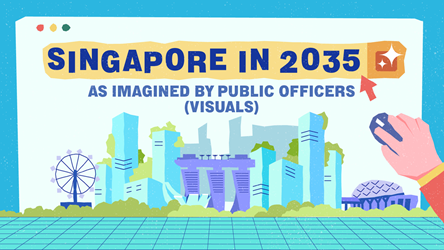Tangible Measures To Combat Falsehoods

In an “infodemic”, or an overabundance of information, there are many ways we can detect falsehoods – cross-referencing multiple sources and considering the author’s affiliation, for example.
What if we could also use software and technology to sieve fact from fiction?
To combat bank staff impersonators, OCBC warns customers via text to increase their vigilance. Text messages are more accessible than webpages for those who are less internet literate.
But the educated and tech-savvy should not let their guard down either, as lawyers, professors, and senior public officers have also fallen for scams.
Top 10 Scam Types in Singapore
According to a report by the Singapore Police Force, these are the most common scams Singaporeans fell prey to in 2022, with the first five making up more than 80% of scams reported:
- Phishing scams
- Job scams
- E-commerce scams
- Investment scams
- Fake friend call scams
- Social media impersonation
- Loan scams
- Internet love scams
- Government official love scams
- Credit-for-sex scams
As misinformation spreads in many forms, a variety of software has emerged to help us humans – with all our cognitive biases – recognise falsehoods.

Uncovering Visual Deepfakes
Deepfake technology is often used to convincingly replace someone’s likeness in a photo or video. With the rise of deepfakes putting words in the mouths of politicians and celebrities, several software tools have emerged to combat such visual trickery.
In 2020, ahead of the US elections, Microsoft created a video authenticator tool that can analyse still photos or videos to detect whether it has been manipulated. It is able to find the edges of the deepfake and subtle grayscale elements that are undetectable to the human eye, and provides a confidence score in real time.
Using the Algorithm
The Factual is an algorithm-driven news rating company recently acquired by Yahoo. It helps readers make informed choices on news sources, including Yahoo’s news pieces as well as content from its publishing partners.
It uses four criteria to judge how informative a piece is:
- Site quality
- Expertise of author
- Quality and diversity of sources
- Tone of article
The algorithm then awards a score (1-100) for each criterion depending on how the piece fares in each category.
Detecting Audio Deepfakes
Audio deepfakes replicate or imitate someone’s voice in audio samples. Used positively, this tech can be used for audiobook narration to match an author’s voice. However, it can also be maliciously used for scam calls and cyberattacks that bypass voice recognition authentication.

A team of researchers at the University of Florida have devised a way to detect audio deepfakes. They analyse the “acoustic and fluid dynamic differences” between voice samples of humans and those generated synthetically by computers.
From a given audio sample, the researchers model the vocal tract shape of the speaker producing the audio. This shape is compared against the vocal tract shape of an actual human using the detector. If there is a huge discrepancy between the model vocal tract shape and that of the human, then the audio is likely a deepfake.
Learning From Falsehoods
Grover is an artificial intelligence (AI) model that generates “fake news”. Yes, you read that right.
The model studies the fake articles it has made, which then helps it to identify disinformation generated by other AI models. Grover’s detection abilities also become more accurate with more data from the same sources.
Its creators anticipate that AI will be able to mass-produce misinformation. Developed by the Allen Institute for Artificial Intelligence and the University of Washington, Grover is meant to serve as a precaution rather than a cure.
Efforts in Singapore
Despite the technology being developed, we still need to play our part to combat misinformation.
Singapore has many avenues of defence against the waves of misinformation.
- Factually is a government website that debunks rumours and clarifies all sorts of misconceptions.
- From January 31, messages from phone numbers that are not registered with the Infocomm Media Development Authority will be received with a “likely scam” label.

- With COVID-19, there has been a greater focus on medical and healthcare-related scams, as disinformation can lead to loss of lives. The Ministry of Health has a webpage to clarify doubts about the virus and vaccines.
- The National Library Board (NLB) encourages a fact-checking mindset based on the S.U.R.E. acronym – Source, Understand, Research, Evaluate – to safeguard against falsehoods. The NLB also has a list of fact-checking tools for COVID-19 information.
- The Scamshield app, by the National Crime Prevention Council and Open Government Products, warns users about suspicious phone calls. The application cross-references an incoming caller’s number with a list maintained by the Singapore Police Force to check if the number has been used for illegal purposes.
- Public agencies such as the Inland Revenue Authority of Singapore provide regular advisories about common scams, such as phishing and impersonation attempts.
- The Singapore government also maintains a list of trusted sites. If the URL of a website doesn’t match, be extra wary of sharing any personal information.
- POSTED ON
Mar 7, 2023
- TEXT BY
Amos Ng
Siti Maziah Masramli
- ILLUSTRATION BY
Mushroomhead









